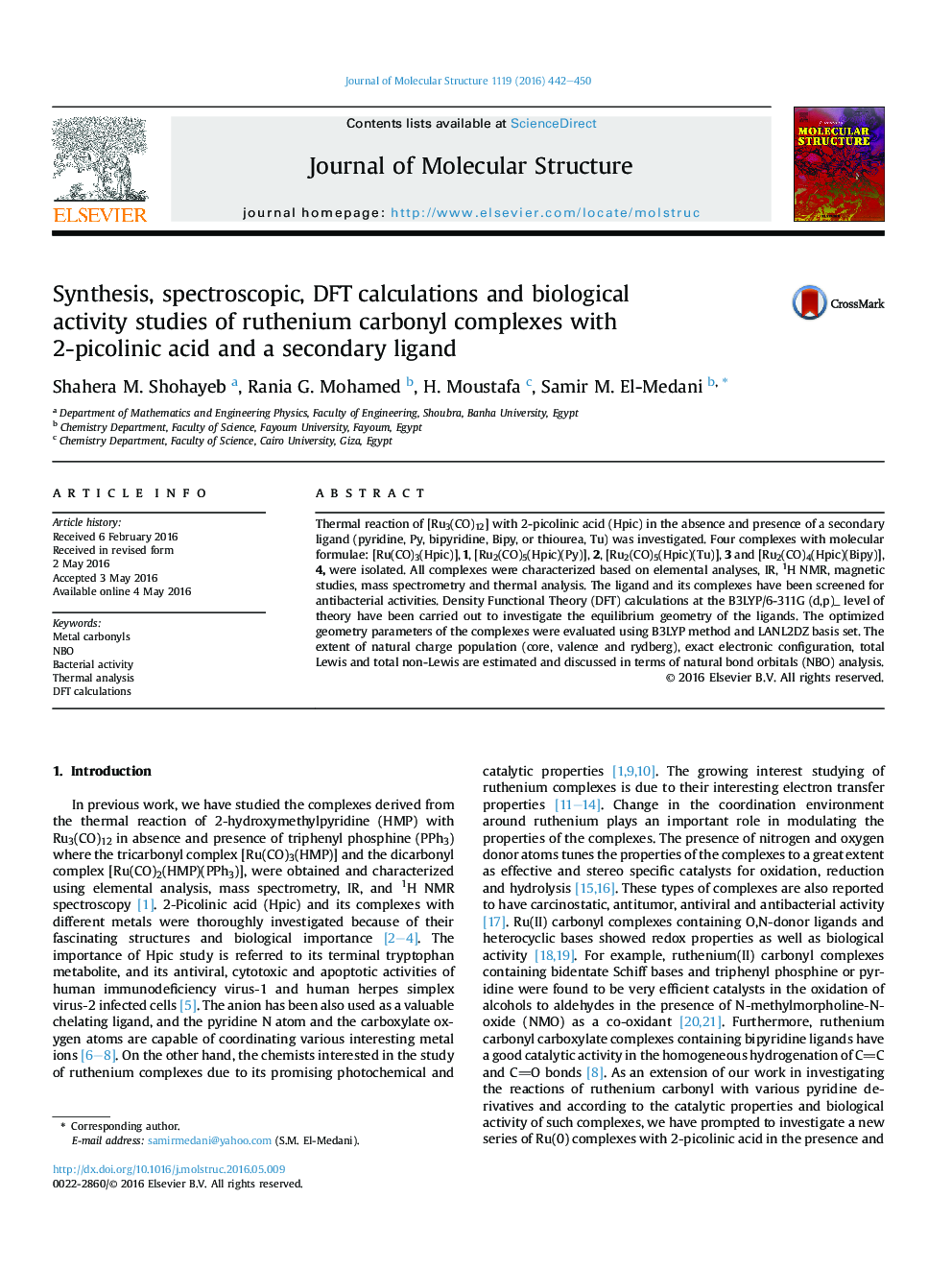| Article ID | Journal | Published Year | Pages | File Type |
|---|---|---|---|---|
| 1404814 | Journal of Molecular Structure | 2016 | 9 Pages |
•Synthesis and spectroscopic characterization of ruthenium metal carbonyl complexes derived from picolinic acid in presence and absence of a secondary ligand; pyridine, thiourea or bipyridine.•Thermal studies of some complexes proved high thermal stability.•The ligand and complexes exhibited remarkable antimicrobial activities.•DFT calculation studies of ruthenium carbonyl complexes with 2-picolinic acid and a secondary ligand.
Thermal reaction of [Ru3(CO)12] with 2-picolinic acid (Hpic) in the absence and presence of a secondary ligand (pyridine, Py, bipyridine, Bipy, or thiourea, Tu) was investigated. Four complexes with molecular formulae: [Ru(CO)3(Hpic)], 1, [Ru2(CO)5(Hpic)(Py)], 2, [Ru2(CO)5(Hpic)(Tu)], 3 and [Ru2(CO)4(Hpic)(Bipy)], 4, were isolated. All complexes were characterized based on elemental analyses, IR, 1H NMR, magnetic studies, mass spectrometry and thermal analysis. The ligand and its complexes have been screened for antibacterial activities. Density Functional Theory (DFT) calculations at the B3LYP/6-311G (d,p)_ level of theory have been carried out to investigate the equilibrium geometry of the ligands. The optimized geometry parameters of the complexes were evaluated using B3LYP method and LANL2DZ basis set. The extent of natural charge population (core, valence and rydberg), exact electronic configuration, total Lewis and total non-Lewis are estimated and discussed in terms of natural bond orbitals (NBO) analysis.
Graphical abstractFigure optionsDownload full-size imageDownload as PowerPoint slide
